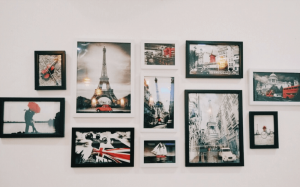How to create art, really interesting to people
 Each artist lives a small critic. This critic observes over the shoulder of the painter when he begins his canvas. He is where the sculptor draws fresh clay. He asks the photographer questions when he looks at the negatives. And screaming to them all: “Does anyone really like it?”. If you are lucky, the voices calm down, and then you enter the process. When we find our flow, these inner critics are driven out one by one.
Each artist lives a small critic. This critic observes over the shoulder of the painter when he begins his canvas. He is where the sculptor draws fresh clay. He asks the photographer questions when he looks at the negatives. And screaming to them all: “Does anyone really like it?”. If you are lucky, the voices calm down, and then you enter the process. When we find our flow, these inner critics are driven out one by one.
But there is no doubt that every artist wants to create work that is interesting to people – which will turn their world upside down. There is no quick fix that can make people love your creation. If you really want people to stop and pay attention to what you are doing, go to the studio with the following “internal rules”.
If you don’t care about your work, don’t expect someone to like it.
Nobody needs what you do if you don’t need it either. It’s simple. Do not try to do the work that should be “done,” focus on the work that interests you.
Probably, at some point in your life, you were given advice that “you must first love yourself.” Apply it to your work. Love what you do. If you are so absorbed in your work that your friends are annoyed by talking about it, then you are on the right path.
The fact is that doing things that you care about is extremely difficult, both physically and emotionally. But if you are doing work that you are not interested in, you risk to burn out. We feed on topics, materials, processes, questions and observations that make us move forward. You have to work in the studio every day. If you do not care what you do, it will be much more difficult.
Create work with the thought of someone specific
Who do you work for? Probably you were once asked about your target audience and, perhaps, even you made a description of your potential buyer.
Think of one particular person for whom you are creating this work. What is he fighting now? What has he experienced recently? Ask yourself these questions, and then select one of the topics for your work. All people share certain common features. Perhaps your art cannot resonate deeply with everyone, but if someone feels it strongly, most likely there is a whole audience with similar feelings.
Do not chase trends
Have you been on Pinterest lately? Every wedding and children’s party begins to look the same. The same goes for artistic trends.
Real genuine inspiration comes from outside the computer screen. Go out and spend some time in the park watching your surroundings. Take along an album and a notebook with records of things that excite you. Go to the cafe and see how people interact with each other – look for subtle, unspoken nuances.
Learn your business from and to
To make people admire your creativity, you must be a real master of your craft. Creating a job is a way to communicate with your audience. Attempting to influence your chosen environment, without knowing the material thoroughly, is similar to the desire to write a book for an English reader in French.
When you have a deep understanding of your craft, you can more easily convey your point of view. Less time is spent on the “how” question, and you are more focused on the “why” question. This does not mean that you stop questioning your process and challenge yourself – always go ahead if you hope to get to the new territory.
Drop the idea that creating art will contribute to external evaluation
To some extent, everyone wants praise and admiration from others. And the artists want this recognition doubly. If you create a work of art that satisfies you and responds to your inner self, it finds a wider response from people. When you are obsessed with how to get recognition and praise from others, you smooth out the impression of your work.
Leave your ego behind the studio door
Ego and creativity are two separate fields of the mind, and they come from two different places. Leave your ego behind the door.
Learn to perceive easily long periods of loneliness.
Although you cannot create work in a vacuum, you will need long periods of time to create worthwhile work.
Find a place where you feel comfortable. Equip your studio so that you can comfortably spend time there. From lighting and decor to music that you like, your studio should be the place where you look in a hurry.
If you are full-time, set aside 5 hours of continuous work in the studio three times a week. If you have part-time work, try to set aside one week to work with your phone off, ignore all notifications and spend several hours in the studio.




